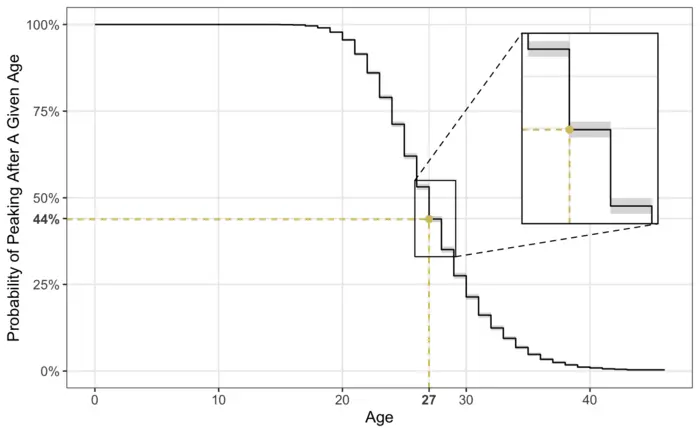There’s a lot that goes into an Olympic athlete’s quest for gold – years of training and rigour – but also, an athlete’s age. A team of University of Waterloo students used statistics to figure out when an Olympic track-and-field athletes’ peak performance will be.
Track-and-field encompasses running, jumping, throwing, and combined event disciplines. Most athletes’ career performance progressions can typically be visualized as a bell curve, in which they train over several years to reach their best performance, or “peak,” at a certain age and then gradually decline.
“Unlike other Olympic sports such as soccer and tennis that have their own high-profile competitions outside of the Games, the Olympics is the largest stage upon which track-and-field athletes compete,” said David Awosoga, a master’s student in data science and the lead author on the research.
“Because the Olympics occur only once every four years, track-and-field athletes must carefully consider when and how they should train to maximize their probability of qualifying for the Olympics while at their personal peak.”
The researchers curated a data set of year-by-year career performance data from every track and field athlete who has competed in an individual event at an Olympics since the 1996 Games in Atlanta. They analyzed the data that considered five factors: gender, nationality, event type, how long the athlete had been training at an elite level, and whether or not it was an Olympic year.
They found that the average age of participation of Olympic track-and-field athletes has remained remarkably consistent for both men and women over the past three decades: just under 27 years old. “Interestingly enough, our analysis also demonstrated that the median peak age for these athletes was 27,” Awosoga said.
After the age of 27, there is only a 44 per cent probability that an athlete’s peak is still ahead of them, and this number drops every subsequent year.
“Age, however, isn’t the only factor in an athlete’s peak,” said Matthew Chow, an undergraduate economics student and co-author of the research. “What’s really exciting is that we also found that knowing it’s an Olympic year actually helps predict an athlete’s performance.”
While the researchers emphasize that their analysis is mainly theoretical, they hope that the findings can be helpful for both athletes and fans.
“Our main takeaway is that we have established a list of variables that help predict when your peak will be,” Awosoga said. “You can’t change the year of the Olympics, your genetics, or your nationality, but you might modify your training regimes to better align with these biological and external factors.”
This kind of research really helps us appreciate how hard it is to make it to the Olympics in the first place, Chow noted.
“When we watch track-and-field athletes compete, we are witnessing a statistical anomaly: someone who is both at the peak of their physical performance, while also benefiting from extremely fortuitous timing,” he said.
The research, Peaks and primes: do athletes get one shot at glory?, appears in the July 2024 issue of the Royal Statistical Society’s Significance Journal.


